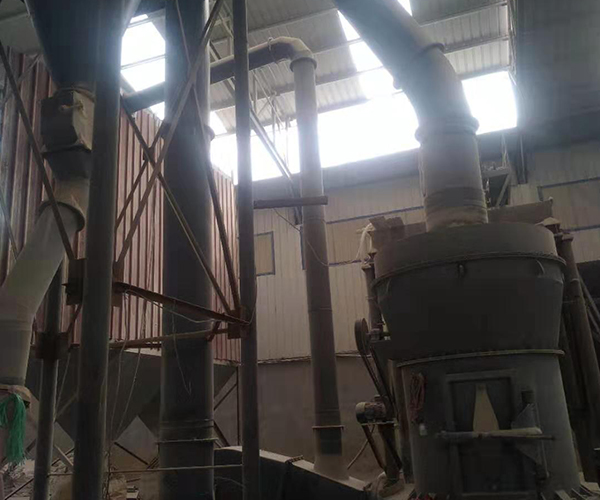Contact: Manager Qu
Phone: +86 15330915520
Contact: Manager Liu
Phone: +86 13464791403
Address: Dashiqiao City, Liaoning Province
Magnesia chrome brick price Ordinary silicate combined magnesia chrome brick is formed by using magnesia below mid-range and lower-grade chrome ore, fired at 1550℃. Ordinary silicate-bound magnesia-chrome bricks contain more silicate phases, and the number of secondary spinels is relatively small, forming a microstructure in which the silicic acid phase is wrapped around the periclase phase.
In ordinary silicate-bonded magnesia-chrome bricks, the low-melting silicate phase separates and wraps the high-melting periclase and chromite, and the high-melting periclase and chromite are directly combined with silicate. Form a direct bonding structure, low-melting silicate interconnects to form a continuous phase; low-melting silicate phase is easy to soften and melt during use, which seriously affects the softening temperature, thermal strength and volume stability of magnesia-chrome bricks In addition, cracks can propagate through the silicate glass phase, and the slag is also easier to penetrate and corrode from the weak silicate glass phase, so the thermal shock resistance and slag erosion resistance of silicate combined magnesia chrome bricks are poor.
Co-sintered magnesia-chrome bricks, also known as fully synthetic magnesia-chrome bricks, are high-quality sintered synthetic magnesia-chrome sands using high-pressure ball press or ultra-high temperature. All are used as raw materials for brick making. They are fired at high temperatures and have good corrosion resistance. And high temperature volume stability.

The results of thermal shock resistance of different magnesia-chromium refractories studied by H.Barthel. From the point of view of thermal shock resistance, silicate magnesia-chromium refractories are the best. Directly combined with magnesia-chromium bricks are slightly inferior, and fused and combined with magnesium The thermal shock resistance of chromium is slightly worse; while the performance of fully synthetic magnesia chrome bricks in terms of impact resistance is quite satisfactory, slightly combined with magnesia chrome bricks directly, better than fused magnesia chrome bricks.
The heat transfer oil heated by the automatic thermal oil unit first heats the salt immersion tank and the magnesium salt solution in the dissolving tank, and then puts the magnesia chrome brick into the preheated salt immersion tank, and uses a vacuum pump to pump the salt immersion tank to the residual pressure It is about 1330MPa, keep it for a period of time, and then input the heated magnesium salt solution to make it under a certain depth of the product, and then send the compressed air to the salt immersion tank to form a pressure of 0.5 to 0.8 MPa, maintain the pressure for a period of time, and release the pressure , Take out the magnesia chrome brick and dry it at 110℃ for 24h in an electric far-infrared dryer.
1.2 Performance testing
1) According to GB/T2997-2000, GB/T5072.2-2004, GB/T3001-2000, respectively, test the volume density, apparent porosity, compressive strength at room temperature and flexural strength of the sample before and after immersion.
2) Use a mercury porosimeter to detect the pore size distribution of the sample before and after immersion.
3) Observe the morphology of the fracture surface of the sample before and after salt immersion with a scanning electron microscope, and analyze the micro-area composition with a matching energy spectrometer.
4) Take the static crucible method to test the corrosion resistance of magnesia-chrome bricks before and after dipping. The copper matte is taken from the Noranda converter of Daye Copper Smelter. The specific process is: processing the magnesia-chrome brick into a crucible sample with a middle hole of 25mm×30mm and an external dimension of 70mm×70mm×70mm, and put 35g of copper matte powder <0.1mm into the crucible, and place it in a resistance furnace. In an argon atmosphere (to avoid copper matte oxidation), the temperature is increased to 1350℃ for 3h at a certain heating rate, and the crucible is cut along the center line of the crucible after the furnace is cooled to observe the relative corrosion resistance.
5) The autoclave method is used to detect the hydration resistance of the magnesia-chrome bricks before and after salt immersion: the magnesia-chrome bricks are processed into 6 cubes of 60mm×60mm×60mm, and after drying at 105~120℃, take out 3 of them and measure the average Compressive strength, put the remaining 3 into the autoclave for hydration test (temperature: 160℃; pressure: 0.29 MPa; holding time: 3h), observe the cracking and peeling of the sample after hydration, and measure Find out the average compressive strength of 3 samples. The percentage of the average compressive strength before and after hydration of the sample is used to characterize the hydration resistance of the material.